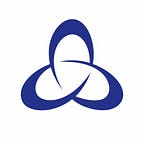Q is for Queen Eleanor
Queen Eleanor of Provence (b. c. 1223 — d. 1291), the wife of Henry III, and one of England’s lesser-known medieval queens, embarked upon her married life here in Canterbury. Eleanor was just twelve years old when she arrived in England in 1236 to marry Henry, a man in his late twenties. The young bride was accompanied by a splendid entourage of several hundred knights, ladies and attendants. The couple met for the first time in Canterbury and their marriage was celebrated a little while afterwards in the cathedral on 14 January. The wedding party then hastened on to London for the new queen’s coronation at Westminster abbey, which took place less than a week later. As the daughter of Count Raymond-Berengar V of Provence and Beatrice of Savoy, this young royal bride matured, in time, into one of England’s most influential queens. Eleanor was very well connected, thanks to her siblings. At the time of Eleanor’s marriage, her eldest sister, Margaret, had already married King Louis IX of France. Her two younger sisters, Sanchia and Beatrice, later married Henry III’s younger brother, Richard of Cornwall, and Charles, count of Anjou.
Eleanor of Provence maintained a connection with Canterbury throughout her married life, occasionally celebrating Christmas there, as she did in 1262, and sharing her husband’s devotion to St Thomas the Martyr (St Thomas Becket). When, in the autumn of 1237, it was feared that Eleanor might be barren, she undertook a joint pilgrimage to Becket’s shrine with Joan, queen of Scots, Henry III’s older sister. In time, these fears proved unfounded and Eleanor formed a loving relationship with Henry — the couple had five children altogether. Under Eleanor’s influence, the English royal court acquired a distinctly Provençal flavour, and the king promoted her Savoyard relatives to positions of wealth and influence. The queen’s uncle, Boniface, was elected as Archbishop of Canterbury in February 1241. According to the St Albans chronicler Matthew Paris, it was at Eleanor’s urging that Henry wrote to the pope to confirm Boniface’s appointment. Although Boniface was a controversial and often absentee archbishop who clashed violently with his suffragans, he tackled Canterbury’s vast debts, built a new hospital at Maidstone and successfully campaigned for the canonisation of Edmund of Abingdon, the previous archbishop. Eleanor and Henry both attended Boniface’s lavish enthronement at Canterbury cathedral in November 1249.
Eleanor’s personal involvement in political life was not without controversy. Over time, the manipulation of patronage brought Eleanor and her kinsmen into vigorous competition with a rival court faction, the Lusignans, Henry III’s half-brothers, who came to England to make their fortunes in 1247. The queen’s willingness to support an extremely costly scheme to purchase the crown of Sicily for her younger son Edmund in 1254 helped to stimulate wider opposition to Henry III’s government, opposition that eventually gave birth to a baronial-led reform movement in England four years later. Although Eleanor initially shared the reformers’ desire to see the Lusignans ousted from royal government, she firmly opposed their attempts to restrict Henry’s power. As relations deteriorated between the royalists and the reformers, Eleanor’s lands and supporters were physically attacked. In 1263, Eleanor departed for France, where she tried to secure military aid for her husband. After the outbreak of civil war in England and Henry III’s defeat at Lewes in 1264, Eleanor remained overseas, where she lobbied the French for support against the new regime of Simon de Montfort in England. Eleanor finally returned to England in November 1265, three months after her eldest son’s victory at the battle of Evesham and Henry III’s liberation from Montfortian custody. Eleanor arrived via the port of Dover and re-joined her husband at Canterbury, where the couple stayed, once more, in the royal castle. As the city that witnessed Eleanor’s marriage in 1236 and her reunion with her husband in 1265, Canterbury held happy associations for this queen.
Louise Wilkinson is Professor of Medieval History, Canterbury Christ Church University.
Biography of Eleanor and translations of many of her letters.
The University will also be hosting a two-day conference on Canterbury and other UNESCO World Heritage Sites around the world on Friday 24 and Saturday 25 May at Old Sessions House, Longport.
